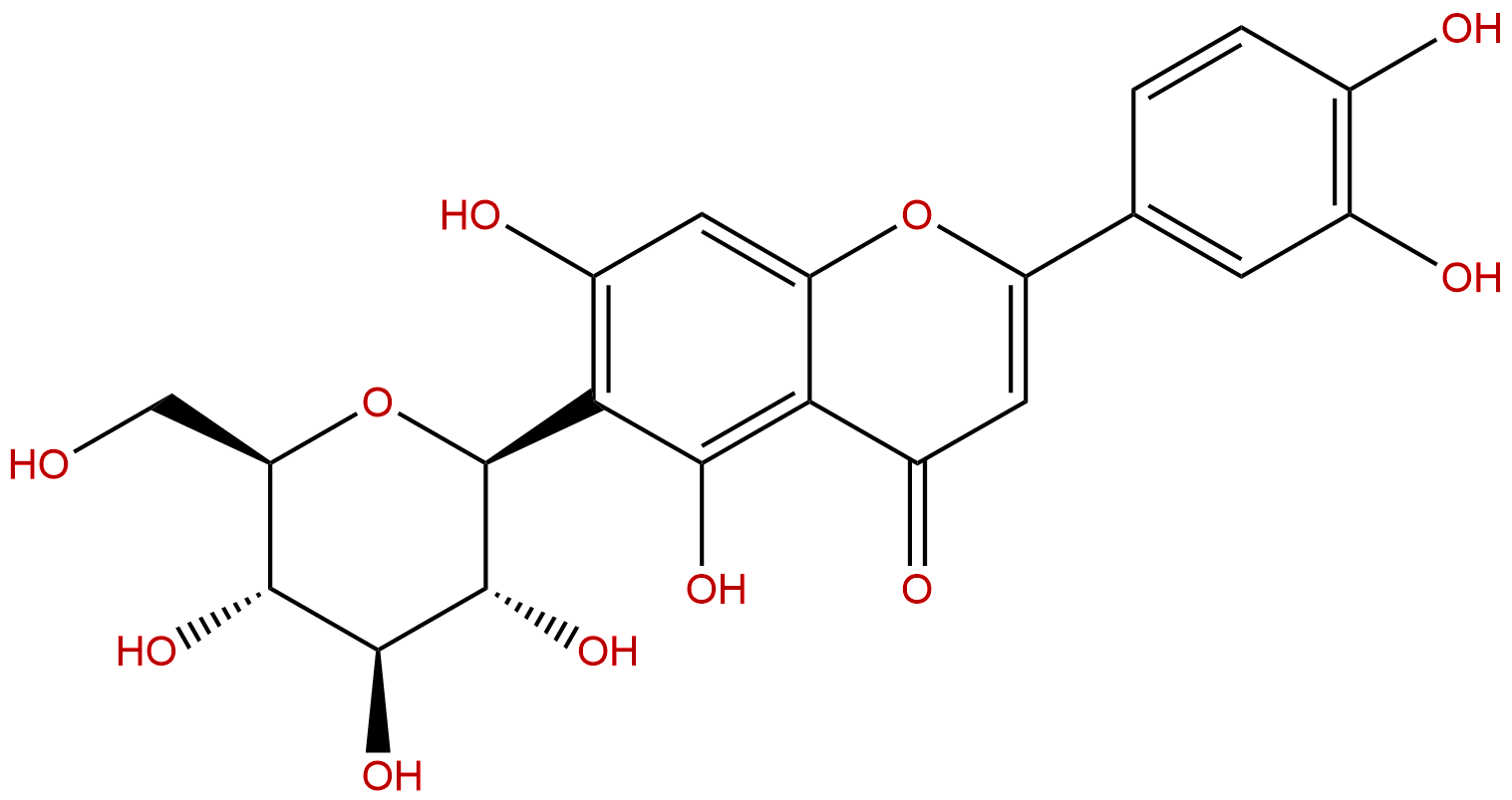Homoorientin Descrtption
Product name: Homoorientin
Synonym name: Isoorientin
Catalogue No.: BP0733
Cas No.: 4261-42-1
Formula: C21H20O11
Mol Weight: 448.38
Botanical Source: Lophatherum gracile Brongn.
Physical Description:
Type of Compound: Flavonoids
Purity: 95%~99%
Analysis Method: HPLC-DAD or/and HPLC-ELSD
Identification Method: Mass, NMR
Packing: Brown vial or HDPE plastic bottle
Storage: Store in a well closed container, protected from air and light. Put into refrigerate or freeze for long term storage.
Whenever possible, you should prepare and use solutions on the same day. However, if you need to make up stock solutions in advance, we recommend that you store the solution as aliquots in tightly sealed vials at -20℃. Generally, these will be useable for up to two weeks.
The product could be supplied from milligrams to grams
Inquire for bulk scale.
Description:
Luteolin-6-C-glucoside has antioxidant activity.
References:
Food Chem Toxicol. 2013 May;55:121-8. doi: 10.1016/j.fct.2012.12.051.
Flavonoids profiles, antioxidant, acetylcholinesterase inhibition activities of extract from Dryoathyrium boryanum (Willd.) Ching.
The profiles and bioactivities of flavonoids extracted from Dryoathyrium boryanum (Willd.) Ching were investigated.
METHODS AND RESULTS:
The total flavonoids content in extract from D. boryanum is about 145.8mg/g. By means of HPLC-DAD-ESI-MS, the main flavonoids in D. boryanum were tentatively identified as 3-hydroxyphloretin 6'-O-hexoside, quercetin-7-hexoside, apigenin7-O-glucoside, luteolin 7-O-glucoside, apigenin 7-O-galactoside, acacetin 7-O-(α-D-apio-furanosyl) (1→6)-β-d-glucoside, 3-hydroxy phloretin 6-O-hexoside, Luteolin-6-C-glucoside. 0.21mg/ml flavonoids extract from D. boryanum showed very strong superoxide anion radical scavenging potential, which is higher than that of rutin (0.25mg/ml). The extract (0.21mg/ml of flavonoids) from D. boryanum exhibited similar DPPH scavenging potential with that of rutin (0.25mg/ml). However, rutin (0.25mg/ml) showed a significantly higher reducing power and ABTS scavenging potential than that of 0.21mg/ml flavonoids extract from D. boryanum.
CONCLUSIONS:
It had no effect on acetylcholinesterase. D. boryanum can be considered as a medicinal plant and the flavonoids from D. boryanum are excellent antioxidants.
Biosci Biotechnol Biochem. 2006 Mar;70(3):718-21.
Antihypertensive effect of an extract of Passiflora edulis rind in spontaneously hypertensive rats.
Orally administered methanol extract of Passiflora edulis rind (10 mg/kg or 50 mg/kg) or luteolin (50 mg/kg), which is one of consistent polyphenols of the extract, significantly lowered systolic blood pressure in spontaneously hypertensive rats (SHRs).
METHODS AND RESULTS:
Quantitative analysis by liquid chromatography tandem mass spectrometry (LC-MS/MS) showed that the extract contained 20 microg/g dry weight of luteolin and 41 microg/g dry weight of Luteolin-6-C-glucoside. It also contained gamma-aminobutyric acid (GABA, 2.4 mg/g dry weight by LC-MS/MS or 4.4 mg/g dry weight by amino acid analysis) which has been reported to be an antihypertensive material.
CONCLUSIONS:
Since the extract contained a relatively high concentration of GABA, the antihypertensive effect of the extract in SHRs might be due mostly to the GABA-induced antihypertensive effect and partially to the vasodilatory effect of polyphenols including luteolin.


